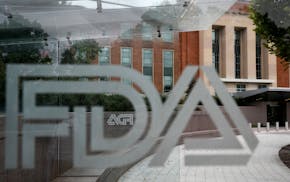None of us need to be reminded of high inflation or the laundry list of challenges that come with it.
While the latest Consumer Price Index (CPI) has fallen to 7.1%, the cost-of-living for Americans is still increasing at the fastest pace since the early 1980s. Inflation and high interest rates are undoubtedly real problems, but they do have some silver linings.
The most obvious benefit is the suddenly attractive yield you can earn on your "safe money." Money market accounts, which paid next to nothing for a decade, now pay … something!
Most offer at least 1.5% annualized. High-yield savings accounts are yielding 2-3%, 12-month CDs around 4% and one-year U.S. Treasury bills yield close to 4.5%. A seven-year ladder of investment-grade corporate bonds yields better than 5%. If most of your cash is sitting in a checking account, it's time to make a change.
It's also an attractive time to have cheap debt. Anyone with a fixed-rate mortgage below 4% should feel ecstatic. Historically, making additional principal payments to pay off your mortgage quicker was a smart strategy. That may be worth another look depending on the spread between your mortgage rate and current bond yields.
If nothing else, paying down fixed debt should be a lower priority. Fewer dollars directed toward loan payments means more to invest and more discretionary income. Both are positives for the stock market and for economic growth.
For those with especially high amounts of debt, inflation can actually ease the debt burden. For the same reason a one-dollar bill is worth less following high inflation, $1 of debt is less difficult to pay off. There is a caveat regarding variable-rate loans since the rates and debt service in those cases will rise along with inflation.
Higher interest rates give the Fed more firepower to react to future economic turmoil when Jerome Powell and co. deem it appropriate. It may seem strange to suggest the Fed is raising rates so that it can cut them again in the future, but that is exactly what will happen. And perhaps sooner rather than later if a recession occurs in the second half of next year, as many predict.
Inflation has rapidly cooled an overheated U.S. housing market and that's not a bad thing. Low interest rates drove home prices to all-time highs, but higher rates will lead to a more balanced market overall. As borrowing costs have risen, home prices have moderated to maintain some semblance of affordability. It's no longer strictly a "seller's market," and that's healthy.
Social Security benefits will go up 8.7% beginning next month, the largest increase since 1981. Pensions that adjust for inflation, if you're among the fortunate few to collect them, should implement similar increases.
From an investment perspective, higher rates have coincided with the bursting of speculative asset bubbles in meme stocks, NFTs and cryptocurrencies. It's a painful but familiar lesson that capital will ultimately flow to the best investments, not merely the most popular.
The outperformance of Value stocks this year (Russell 1000 Value -7%) relative to Growth (Russell 1000 Growth -26%) is a reminder that "growth at all costs" is no longer in vogue. With inflation as the backdrop, the stock market has rewarded fiscally responsible companies that deliver consistent and predictable earnings growth. From our perspective, that is perfectly sensible.
High inflation will eventually subside, but it's not all gloom and doom in the meantime. As is the case during any segment of the economic cycle, there are opportunities to be found if you know where to look.
Ben Marks is chief investment officer at Marks Group Wealth Management in Minnetonka. He can be reached at ben.marks@marksgroup.com. Brett Angel is a senior wealth adviser at the firm.

Remnants of bird flu virus found in pasteurized milk, FDA says
Timberwolves dispute between Taylor and Lore, Rodriguez over ownership moves to mediation
Tesla 1Q profit falls 55%, but stock jumps as company moves to speed production of cheaper vehicles
Montana minor league baseball team in dispute with National Park Service over arrowhead logo
